
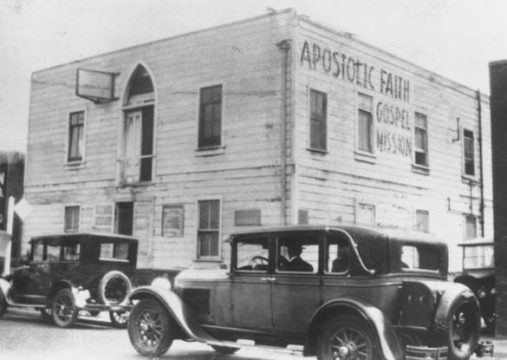
312 Azusa Street, Los Angeles
During and after the 1905 Welsh Revival, similar revivals began taking place in nations throughout the world. The United States was no exception. The 1905 American Revival was a wide sweeping movement that spread the length and breadth of the nation. This post deals with the Pentecostal movement which, most will attest, originated from a mission that was started at 312 Azusa Street in Los Angeles, CA, in the spring of 1906.
What Happened
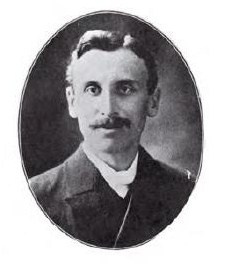
Joseph Smale
For those desiring a few additional details about what led up to the Azusa Street Revival, we encourage them to read our story, the 1901 Topeka Outpouring.
Joseph Smale and First Baptist Church of Los Angeles
In June of 1905 an unusual revival took place at the First Baptist Church of Los Angeles. In September, that congregation had sent their pastor, Joseph Smale, to Israel for rest and recuperation. On his return home he stopped and visited Wales, which at that time was still enjoying the lingering revival that began in November of 1904.
When Smale returned to Los Angeles, he addressed his congregation, which was packed out, with the sermon text originating from Acts 2:15-17: “this is what was spoken by the prophet Joel.”
Immediately the congregation responded to the Holy Spirit’s undeniable presence. Two hundred people immediately ran to the front of the church and were weeping and sobbing. Many were crying so hard that their prayers were unable to be understood. Confession of sins, of both blacks and whites took place, and many were converted. This commenced another revival which involved nightly meetings for 15 weeks, with people coming from a considerable distance to join in on this congregation’s visitation of the Holy Spirit.
First Baptist Church of Los Angeles became a hub for revival in the city, with many coming to the prayer meetings, until leaders of the church, uncomfortable with the “freedom allowed to the Holy Spirit,” removed Smale from his position as pastor.
Pentecostals today attribute credit to Smale’s series of sermons titled: “The Pentecostal Blessing,” as laying the foundation to the Pentecostal movement which followed.
Frank Bartleman and His Ministry in Los Angeles
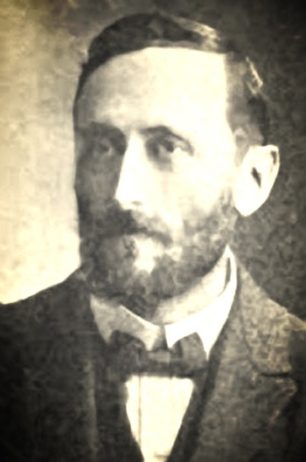
Frank Bartleman
Frank Bartleman arrived in Los Angeles on December 22, 1904. He lived and labored by faith, serving various churches, like First Baptist alongside Joseph Smale, and any congregation that was pursuing God for a “new Pentecost.”
Bartleman was a tireless promoter of revival. Some would say his zeal went too far, as his commitment to fasting brought concern to his wife and other close associates. He had corresponded on several occasions with Evan Roberts, who had become the leading figure of the 1905 Welsh Revival.
Because of Bartleman’s journalistic skills, we are able to follow the progression of the revival in Los Angeles, for he documented events as they transpired. He was also significantly used by God in the writing of many tracts. Following the revival, he traveled around the nation spreading the Pentecostal message.
William Seymour
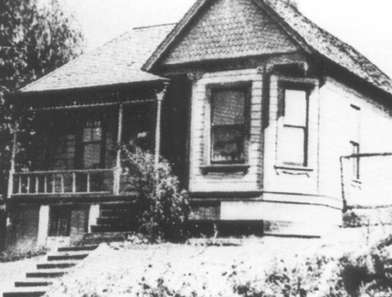
They soon outgrew the Bonnie Brae house
William J. Seymour became the personality prominently associated with the Azusa Street Revival. Seymour arrived in Los Angeles on February 22, 1906, at the request of a Holiness mission on Santa Fe Street. That congregation asked him to become their pastor, but his ministry there only lasted till March 4 when his message of speaking in tongues as being the evidence of being filled with the Holy Spirit was rejected by that congregation and the Holiness Church with which he was in association.
Seymour then began meetings in a home at 216 North Bonnie Brae Street. It was there on April 9, 1906, that seven were baptized in the Holy Spirit, which included speaking in other tongues.
The crowds at the home on Bonnie Brae grew so large that Seymour moved the meetings to an old building with a dirt floor, located at 312 Azusa Street. The building could seat close to 300 (some say 900), with boardwalks for people to stand outside the building, giving opportunity for a few to view through the windows.
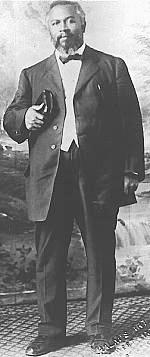
William Seymour
The services went on day and night for three years, with missionaries arriving from locations around the globe, who, after experiencing a “New Pentecost,” returned to their fields of labor and recognized that they had become carriers of God’s presence, as revival broke out in the nations where they were serving.
To help spread Pentecostalism, Seymour established a paper called “The Apostolic Faith,” which proved to be especially productive, as it had a distribution that encircled the globe with 50,000 subscribers. This paper gave firsthand accounts and testimonials of the revival, as well as sermons written by Seymour and others involved with the work.
People from all denominations, from practically every state in the nation came seeking a fresh encounter with God. Those who came believing left with their faith renewed, having witnessed unity among the denominations and races, miraculous healings, and an undeniable presence of God.
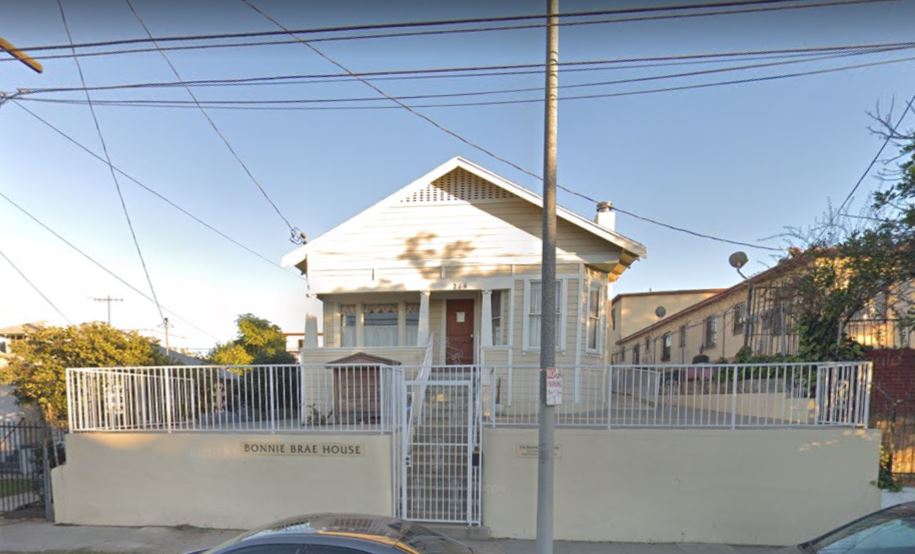
216 Bonnie Brae Street Today (It is Now a Museum)
Racial and Social Barriers Non-Existent
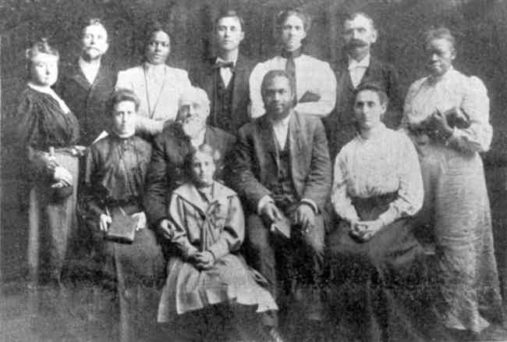
Azusa Street leaders
About two thirds of the congregation were white, but even though there was still racial segregation, it was not experienced in this congregation. Due to people’s hunger for God’s presence, they didn’t care who was sitting next to them, black, white, Hispanic, Chinese, homeless, etc.
Results of the 1906-1909 Azusa Street Revival
►Thousands were saved.
►Thousands of Christians were revived.
►Many were healed.
►Pentecostalism spread throughout the world, taking root in not less than 50 nations.
►Pentecostal and Charismatic denominations trace their roots to Azusa Street.
►There are more than 500 million Pentecostals and charismatic believers, and they are the fastest-growing form of Christianity today.
Sources
► 1896 Shearer Schoolhouse Revival by Beautiful Feet
► Azusa Street Revival by Wikipedia
► Azusa Street: How Revival Came to Los Angeles by Frank Bartleman
► Frank Bartleman by Christian Classics Ethereal Library
► Pentecostal Explosion by Stanley M. Horton (October 7, 1962 edition of The Pentecostal Evangel)
► The Azusa Street Papers by William Seymour
► The Charismatic Century by Jack Hayford
► The Flaming Tongue by J. Edwin Orr
► The Holiness-Pentecostal Tradition by Vinson Synan
► The Los Angeles Outpouring, 1906 by Heaven Sent Revival
► The Pentecostal Blessing by Joseph Smale
► “With Signs Following” by Stanley H. Frodsham
Return to List of Revival Stories
Chet & Phyllis Swearingen:
Office: (260) 920-8248
romans1015@outlook.com
Beautiful Feet
P.O. Box 915
Auburn, IN 46706

